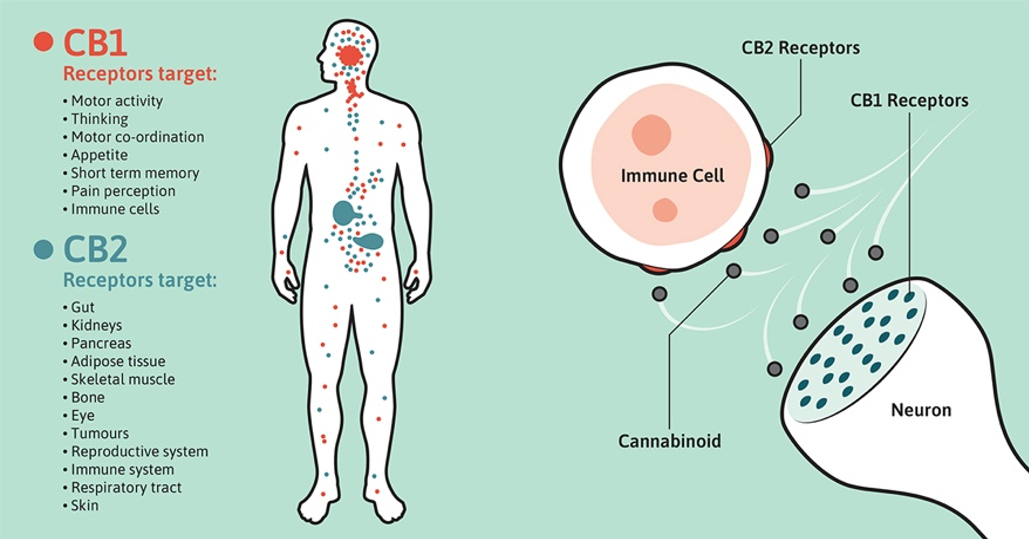7 Simple Techniques For The Endocannabinoid System: Physiology And Pharmacology
In computer mice, it has actually been revealed that anandamide modulates the chance of implantation to the uterine wall. As an example, in people, the probability of losing the unborn baby increases if uterine anandamide degrees are too high or low. These outcomes recommend that consumption of exogenous cannabinoids (e.cbd oil for pain in cats g. cannabis) can decrease the possibility for pregnancy for ladies with high anandamide levels, and conversely, it can raise the possibility for pregnancy in ladies whose anandamide degrees were also low.
Research located that the CB1 receptor is shared presynaptically by motor neurons that innervate visceral organs. Cannabinoid-mediated restraint of electric possibilities results in a reduction in noradrenaline release from understanding nerve system nerves. Other studies have actually located similar impacts in endocannabinoid guideline of digestive tract motility, consisting of the innervation of smooth muscles related to the digestion, urinary system, and also reproductive systems.

As much of these fibers are primarily GABAergic, cannabinoid excitement in the spine causes disinhibition that must enhance noradrenaline release as well as depletion of noxious-stimuli-processing in the periphery and dorsal root ganglion. The endocannabinoid most researched suffering is palmitoylethanolamide. Palmitoylethanolamide is a fatty amine pertaining to anandamide, yet saturated and also although initially it was assumed that palmitoylethanolamide would bind to the CB1 and the CB2 receptor, later on it was located that the most vital receptors are the PPAR-alpha receptor, the TRPV receptor and the GPR55 receptor.

Modulation of the endocannabinoid system by metabolism to N-arachidinoyl-phenolamine (AM404), an endogenous cannabinoid natural chemical, has been found to be one system for analgesia by acetaminophen (paracetamol). Endocannabinoids are associated with placebo generated analgesia actions. Anandamide as well as N-arachidonoyl dopamine (NADA) have actually been revealed to act upon temperature-sensing TRPV1 channels, which are associated with thermoregulation.
NADA activates the TRPV1 channel with an EC50 of about of 50 nM. [] The high effectiveness makes it the suppositious endogenous TRPV1 agonist. Anandamide has actually likewise been located to turn on TRPV1 on sensory neuron terminals, and consequently trigger vasodilation. TRPV1 may also be activated by methanandamide and arachidonyl-2′-chloroethylamide (ACEA). Enhanced endocannabinoid signaling within the main nervous system promotes sleep-inducing effects.
Management of anandamide into the basic forebrain of rats has likewise been revealed to increase degrees of adenosine, which contributes in promoting rest as well as suppressing stimulation. Rapid Eye Movement deprivation in rats has actually been shown to boost CB1 receptor expression in the main nerve system. Furthermore, anandamide degrees possess a body clock in the rat, with levels being greater in the light phase of the day, which is when rats are generally sleeping or less active, because they are nighttime.
The ECS is also entailed in mediating some of the physiological and also cognitive effects of volunteer exercise in humans as well as other animals, such as adding to exercise-induced bliss in addition to modulating locomotor task and inspirational salience for incentives. In humans, the plasma focus of particular endocannabinoids (i. e., anandamide) have been located to climb throughout physical task; since endocannabinoids can properly pass through the bloodbrain obstacle, it has actually been suggested that anandamide, along with other euphoriant neurochemicals, adds to the advancement of exercise-induced bliss in human beings, a state informally referred to as a runner’s high.
What Does The Endocannabinoid System And Cannabis: The Perfect … Mean?
The phylogenetic circulation of these lipids may be a consequence of interactions/adaptations to the surrounding problems such as chemical plant-pollinator interactions, interaction and protection devices. Both novel EC-like molecules derived from the eicosatetraenoic acid juniperonic acid, an omega-3 structural isomer of AA, specifically juniperoyl ethanolamide and 2-juniperoyl glycerol (1/2-AG) in gymnosperms, lycophytes and also couple of monilophytes, reveal AA is an evolutionarily preserved signalling particle that acts in plants in response to anxiety comparable to that in pet systems.

